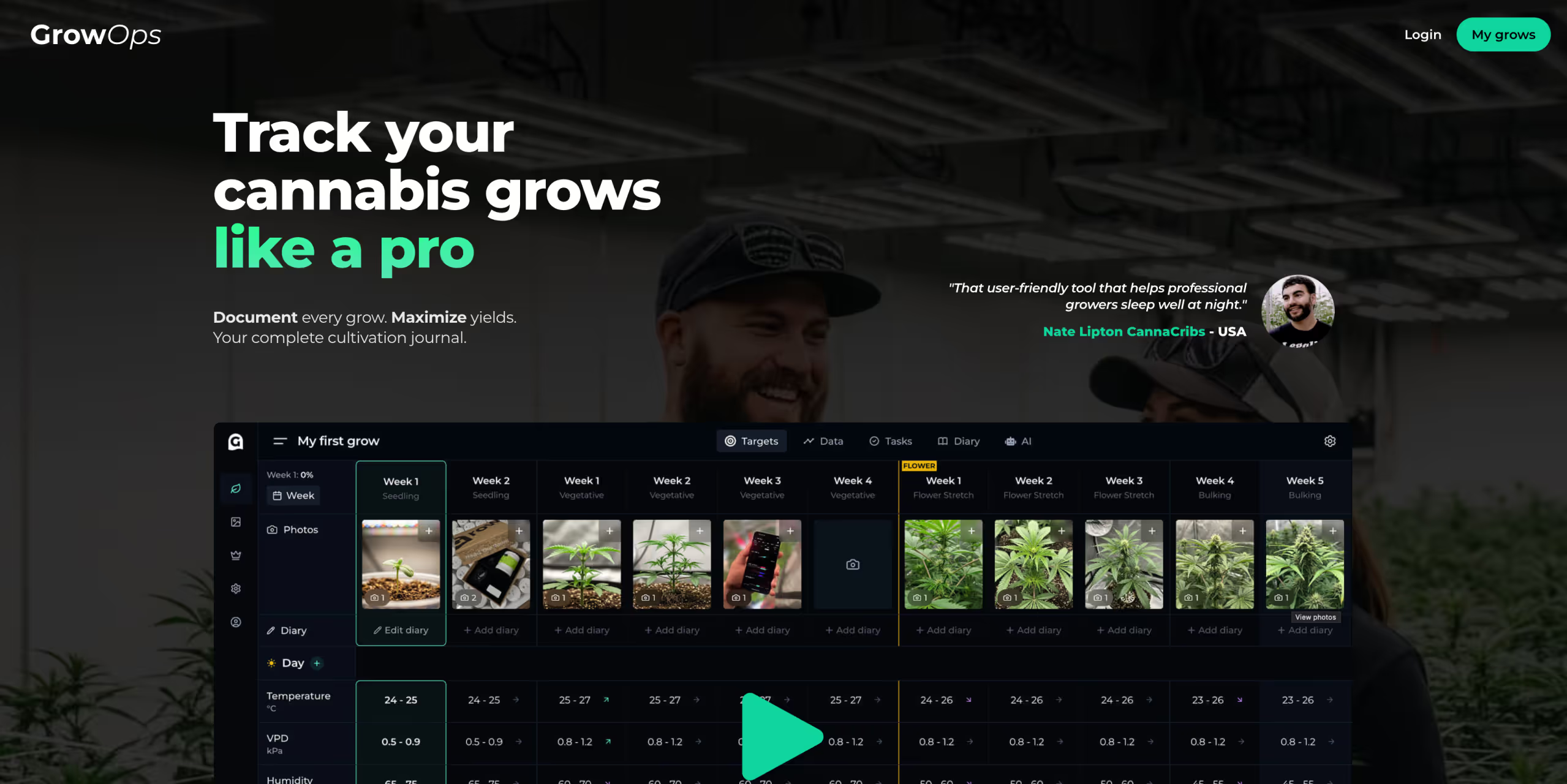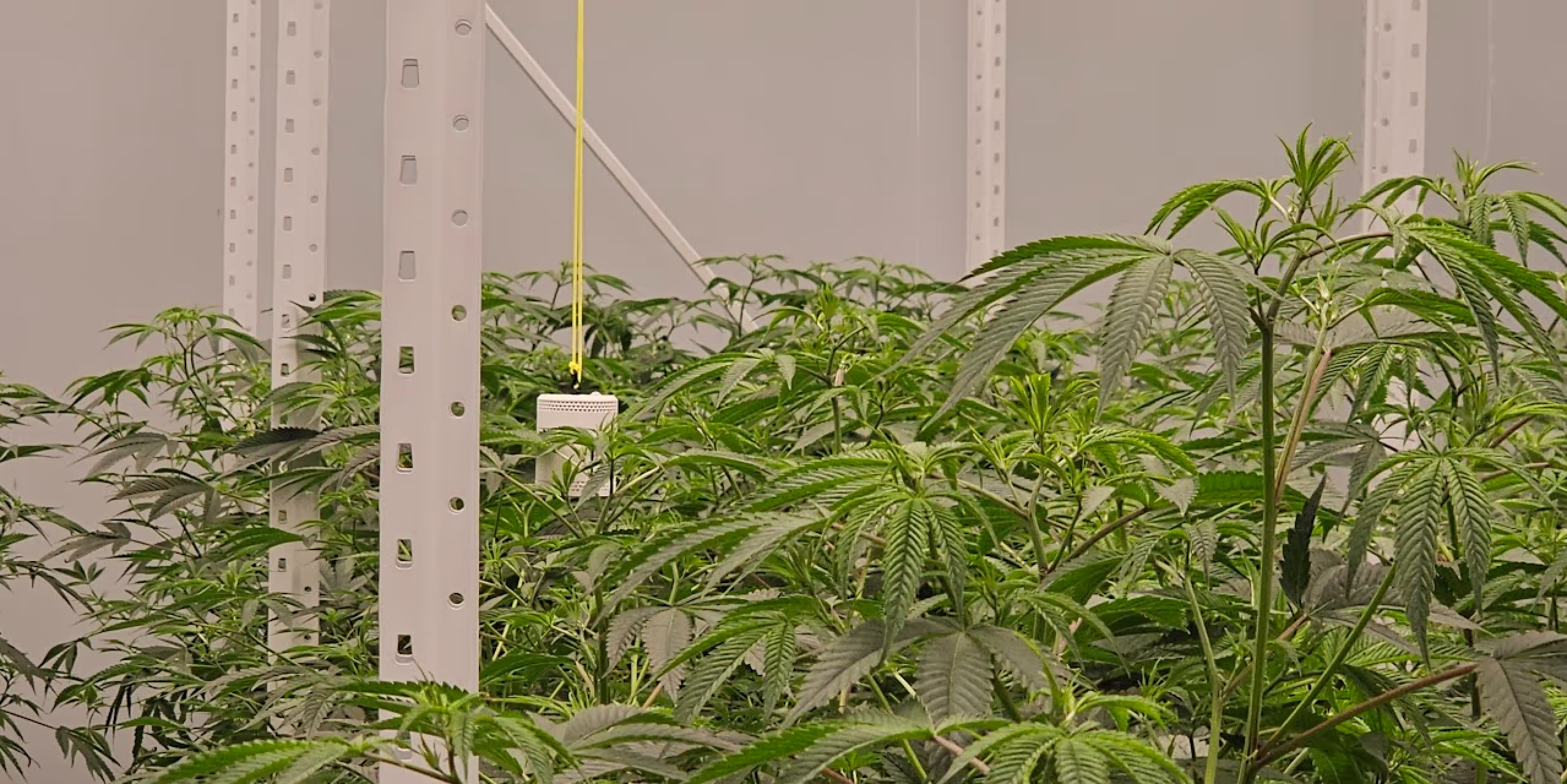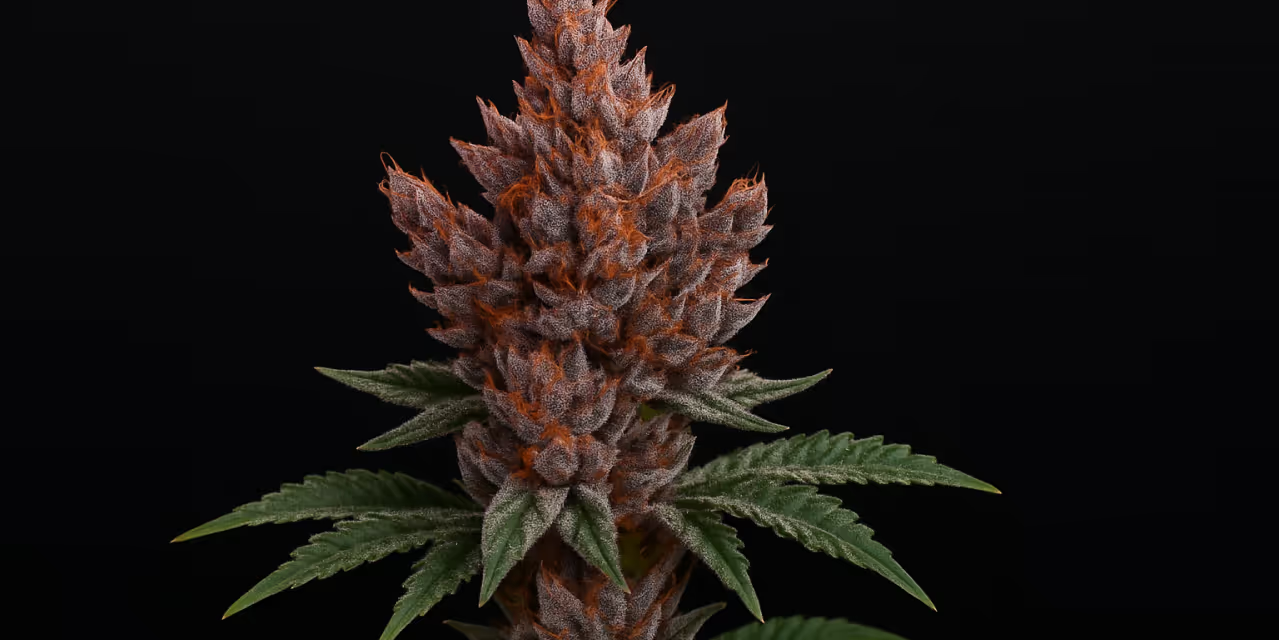Topped plant vs non topped: Maximise your yield potential


Did you know that the decision to top or not to top your cannabis plants could be a defining factor in maximising your yield potential?
Failure to address this crucial aspect of cannabis cultivation could mean the difference between a stellar and subpar harvest.
If you want to enhance your cultivation techniques and achieve higher yields, you're in the right place.
This comprehensive guide unlocks the secrets behind topped and non topped plants, revealing how each method impacts growth and harvest.
Join us as we delve into the science, pros and cons, and practical strategies to optimise your cannabis cultivation journey. Get ready to unlock the full potential of your plants!
Disclaimer: Any information given on this site is for educational purposes only. Please ensure if you’re growing cannabis, you’re doing so in accordance with the law and subject to appropriate permissions and licenses of the applicable country.
Topping, not topping, and the science that supports them
To top or not to top is something that’s widely discussed and debated among cannabis growers.
Your choice either way exerts unique influences on cannabis plant development and yield outcomes.
Non topped plants retain their single main leader (the tall main stem) intact.
Topping plants involves cutting off the growing tip of the main stem. This technique promotes the growth of lateral branches and multiple budding sites.
This action interrupts the plant’s natural apical dominance (the phenomenon where the main stem inhibits the growth of lateral branches) by removing the apical bud or the plant’s main stem tip.
When the dominant top is removed, the plant redistributes its energy to lower branches, promoting lateral growth and the development of multiple budding sites.
This redistribution alters the balance of plant hormones, directing resources towards sideways growth rather than vertical elongation.

As a result, topped plants manifest a denser, bushier morphology characterised by prolific branching and enhanced bud formation - a stark contrast to the more streamlined Christmas tree shape structure of their non topped plant counterparts.

A good grasp of these underlying principles is indispensable for maximising your indoor grow's productivity and yield potential.
Stay ahead in gardening – join the Grow The Best newsletter!

Pros and cons of topping vs non topping cannabis plants
When growing cannabis, topping serves as a strategic tool for growers seeking to optimise their cannabis plants to perfection, yet it's not without its trade-offs. Let's delve into the nuanced advantages and limitations of this technique.
Pros of topping:
- Control the height of the plant: Topping offers precise control over your plants growing vertically, a particularly invaluable asset if you grow indoor plants because space is at a premium. By strategically removing the central stalk tip, you can curtail excessive height, ensuring your indoor cannabis plants continue to fit within a confined grow space.
- Stimulate bushier growth: Topping cannabis plants redirects their energy away from vertical growth towards lateral branches. Topped plants see an increase in the number of side branches, which can enhance the plant's aesthetic appeal while also sending more of the plant’s energy to the lateral branches for bud production, promising a higher yield during harvest time. This, in turn, can enable you to grow fewer plants whilst harvesting greater yields.
- Maximise yield potential in limited space: Topped plants reign supreme in indoor cultivation, where every inch of space is a precious commodity. By optimising vertical real estate and promoting a compact, bushy structure, growers can ensure more light exposure and airflow to all parts of the plant, thereby supercharging photosynthesis and the development of buds.
Cons of topping:
- Smaller buds due to increased branching: While topped plants see an increase in sideways growth, this can inadvertently lead to smaller individual buds compared to their non topped counterparts. This trade-off may prove less than ideal for growers fixated on maximising bud size over overall yield.
- Thinner branches require additional support: The extra side branches resulting from topping can result in thinner and weaker branches that may struggle to support the weight of developing buds. You may need to use support structures such as trellises, stakes or a ScrOG net.
Pros of non topping:
- Maintain the natural form of the plant: Non topped cannabis plants adhere faithfully to their innate growth pattern. Preserving the integrity of the main stem shows their natural form and unadulterated appearance.
- Potential for larger main buds: With the main stem left untouched, non topped plants can yield larger individual buds - a tantalising prospect for growers with a penchant for mammoth-sized colas.
Cons of non topping:
- Limited control over plant height: Non topping relinquishes growers' control over plant height. This results in towering specimens that grow taller with elongated internodal spacing (larger spaces between leaf nodes). Without the guiding hand of topping to rein in excessive growth, additional pruning or training techniques may be required to maintain manageable dimensions and facilitate more light penetration to lower canopy layers.
- Less side branches and potential for lower yields: In the absence of topping-induced branching stimulation, non topped plants may exhibit few lateral branches and fewer buds, ultimately curbing their overall yield potential compared to their topped counterparts.
Understanding the nuanced advantages and limitations of both topping and non topping techniques empowers you to make informed decisions tailored to your specific cultivation goals and environmental conditions.
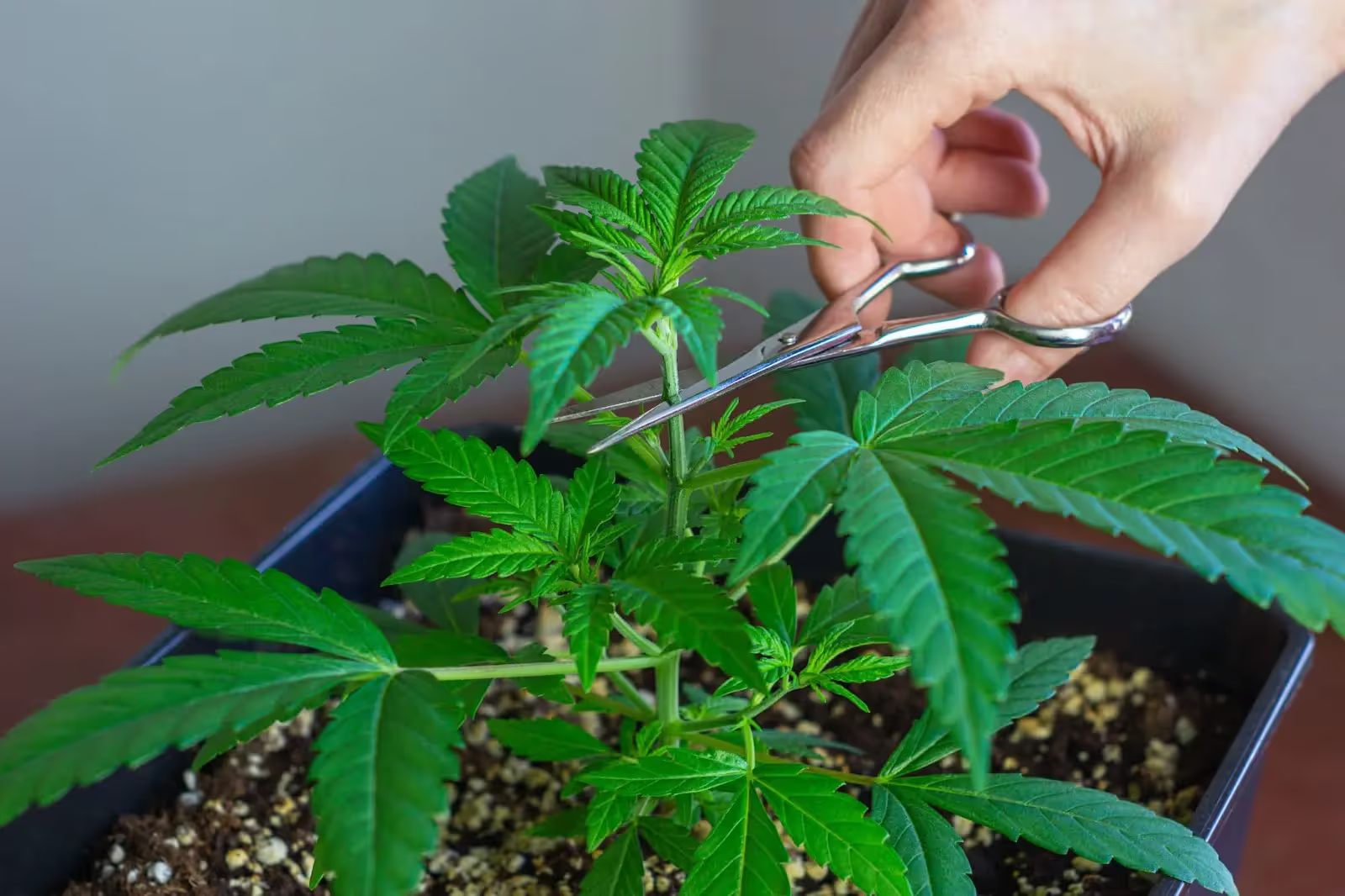
Factors to consider: Topped plant vs non topped plants
When choosing which cultivation technique to follow, topped or non topped, several key factors should be evaluated to optimise plant health and maximise yield potential:
Environmental factors
Carefully assess the environmental conditions of your grow space, such as humidity, temperature and VPD, using an accurate grow room monitoring device. Ensure you also take stock of spatial constraints.
Topped cannabis plants often excel in indoor environments with limited vertical growth space, promoting bushier growth and better light distribution.
In contrast, non topped plants are ideal for outdoor cultivation, where natural growth patterns and taller growth can occur without space limitations.
Grower experience
Your experience level plays a critical role in deciding whether to employ topping techniques.
Topping cannabis plants involves precisely cutting off the top of the central stalk at the growing tip to encourage new growth laterally and increase bud sites. This method is suitable for those familiar with plant training methods.
Novice growers might benefit from allowing plants to grow naturally, minimising the risk of stress training mishaps.
Plant characteristics
Evaluate the specific characteristics of your cannabis strain, including genetic predisposition to bushier or taller growth, natural apical dominance, and overall vigour.
Some strains may demonstrate enhanced resin production and more robust bud development when topped. In contrast, others might achieve optimal health and a higher yield when allowed to grow vertically without topping.
Cultivation goals
Identify your cultivation objectives, whether you aim to maximise yields, enhance bud size, or achieve uniform growth across your grow.
Topping can significantly influence the plant's growth pattern and is a preferred technique for growers aiming to create a controlled, even canopy and maximise space within low-stress training setups.
Space constraints
Consider the space available in your cultivation area. Indoor growers often face height restrictions and may find that topped cannabis plants better accommodate limited spaces, promoting more branches and multiple dominant colas under artificial light.
Conversely, non topped plants are well-suited for outdoor growers who can leverage the cannabis plant's natural height and growth tendencies.
By carefully considering these factors, you can make informed decisions regarding topping and non topping techniques that align with your unique cultivation objectives and environmental conditions.
This thoughtful approach lays the foundation for successful cannabis cultivation and maximised yield potential.

Topped plant vs non topped outdoors
If you grow outdoor plants, topped plant vs non topped is an interesting topic. Topping your outdoor cannabis plants offers several benefits:
- Enhanced bushiness: Topping encourages plants to grow wider rather than taller, which can be beneficial for keeping your grow discreet and manageable. This bushier form allows plants to catch enough light on a horizontal level, potentially increasing bud production across the plant.
- Wind resistance: Lower, bushier plants are generally more resistant to damage from strong winds, a common concern in many outdoor growing environments.
- More even canopy: A levelled canopy ensures that more of the plant is exposed to sunlight, reducing the risk of shaded areas that develop poorly. This can be crucial in maximising the efficiency of the space and light available.
Balance these points against these considerations:
- Increased maintenance: Topped plants may require more frequent attention and care to manage the additional growth and ensure all areas receive adequate light and nutrients.
- Risk of stress: Incorrect topping can stress the plants, particularly if done too late in the season or during adverse weather conditions, potentially impacting plant health and yield.
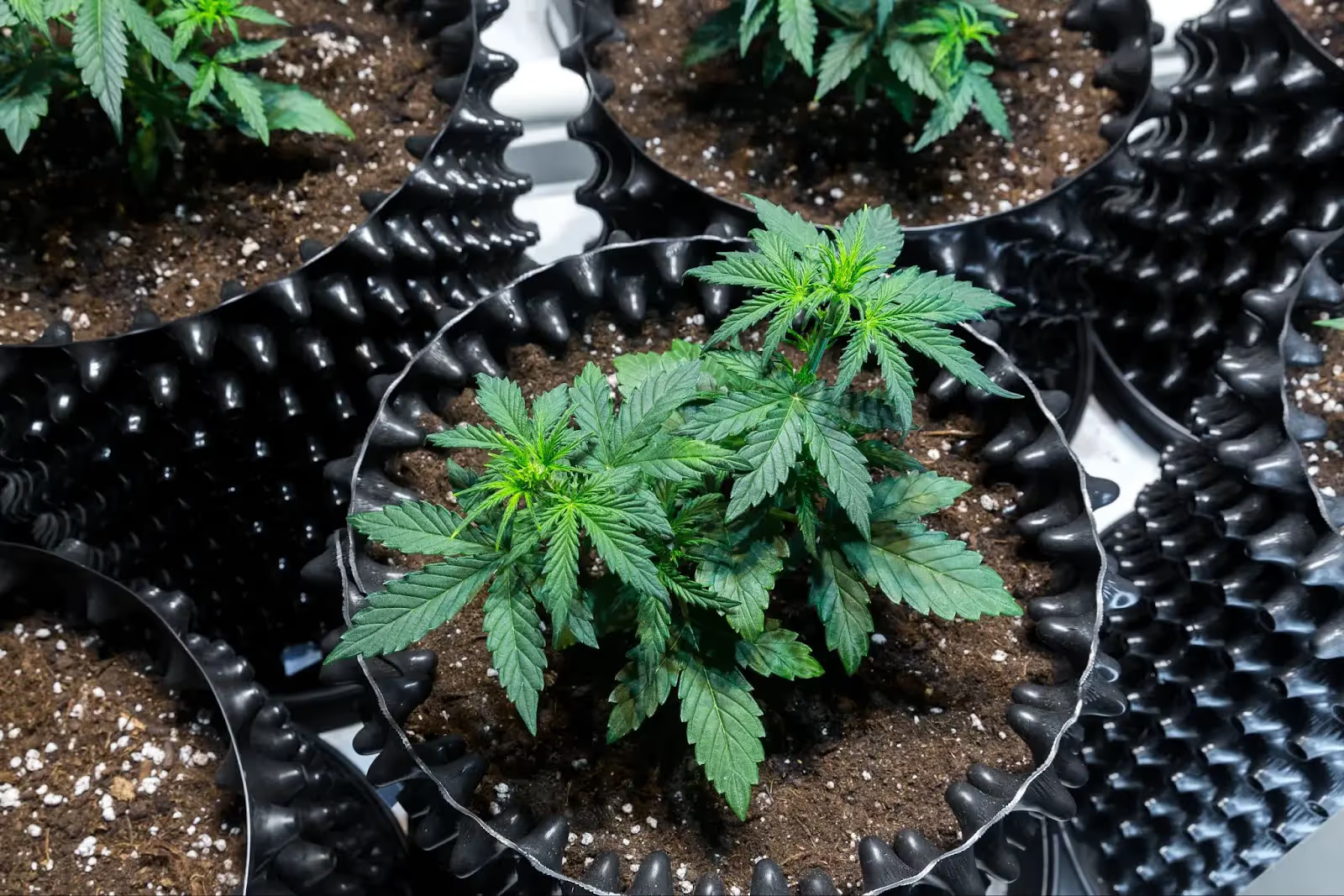
Autoflower topped plant vs non topped
When it comes to topping autoflowering cannabis plants, there are some specific considerations to take into account due to the unique characteristics of these plants:
- Limited vegetative growth period: Autoflowers have a predetermined, short vegetative phase before they automatically begin flowering. Because of this, the timing of topping is crucial. If done too late, it can stress the plant right as it enters the flowering phase, which might reduce its overall yield.
- Stress sensitivity: Autoflowers are generally more sensitive to stress compared to photoperiod strains. If not done correctly or at the right time, topping can significantly stunt growth because autoflowers have less time to recover from stress before they start flowering.
Weigh these factors against the potential benefits very carefully:
- Topping can promote a bushier structure if executed properly and early in the plant's life cycle (usually within the first 2-3 weeks of growth). This could lead to more bud sites and potentially a more even canopy, good for light distribution.
- Since autoflowers grow more predictably in terms of height and life cycle, growers can use topping to control the plant’s shape and height very effectively, provided they understand the growth pattern of the strain they’re growing.
Whether or not to top autoflowers largely depends on your familiarity with the specific strain's characteristics, your growing environment, and your comfort with potentially risking stress to achieve a more controlled plant structure.
The risks might outweigh the benefits for many, making it preferable to let autoflowers develop naturally.

Maximising cannabis plant yield potential
To optimise yield potential in cannabis cultivation, regardless of whether you choose to top or not top your plants, several key strategies can be employed:
Pruning and training
Implement pruning techniques such as defoliation and selective branch removal to enhance light penetration and airflow within the canopy, which is essential for healthy growth.
Additionally, utilise training methods such as low-stress training (LST), high-stress training (HST), or the Screen of Green (ScrOG) technique to manipulate plant growth and maximise bud development.
Nutrient management
Maintain a balanced nutrient regimen tailored to your cannabis plants' specific needs during each growth stage.
Monitor nutrient uptake and adjust fertiliser formulations accordingly to prevent deficiencies or excesses that may hinder growth and yield.
Lighting
Invest in high-quality lighting with the appropriate spectrum and intensity for optimal photosynthesis and bud production.
Adjust light fixtures as necessary to ensure uniform light distribution across the canopy and mitigate the risk of light burn or shading.
Environmental control
Regulating temperature, humidity, and airflow within the cultivation space creates a stable and favourable growing environment.
Monitor environmental parameters closely and implement measures to mitigate stressors such as excessive heat, humidity fluctuations, or poor air circulation.
Pest and disease management
Implement proactive pest and disease prevention strategies to safeguard your plants’ health and minimise yield loss.
Regularly inspect plants for signs of pests or pathogens and promptly address any issues through integrated pest management (IPM) practices or organic pest control methods.
Harvest timing
Time your harvests carefully to maximise cannabinoid and terpene content while ensuring optimal bud maturity and potency.
Monitor trichome development and use magnification tools to assess resin gland colouration and maturity levels before starting to harvest.
By integrating these strategies into your cannabis cultivation practices, you can maximise yield potential and achieve optimal harvests, regardless of whether you opt for topping or non topping techniques.
Continuously assess and refine your cultivation methods to adapt to evolving environmental conditions and optimise plant performance throughout the growth cycle.
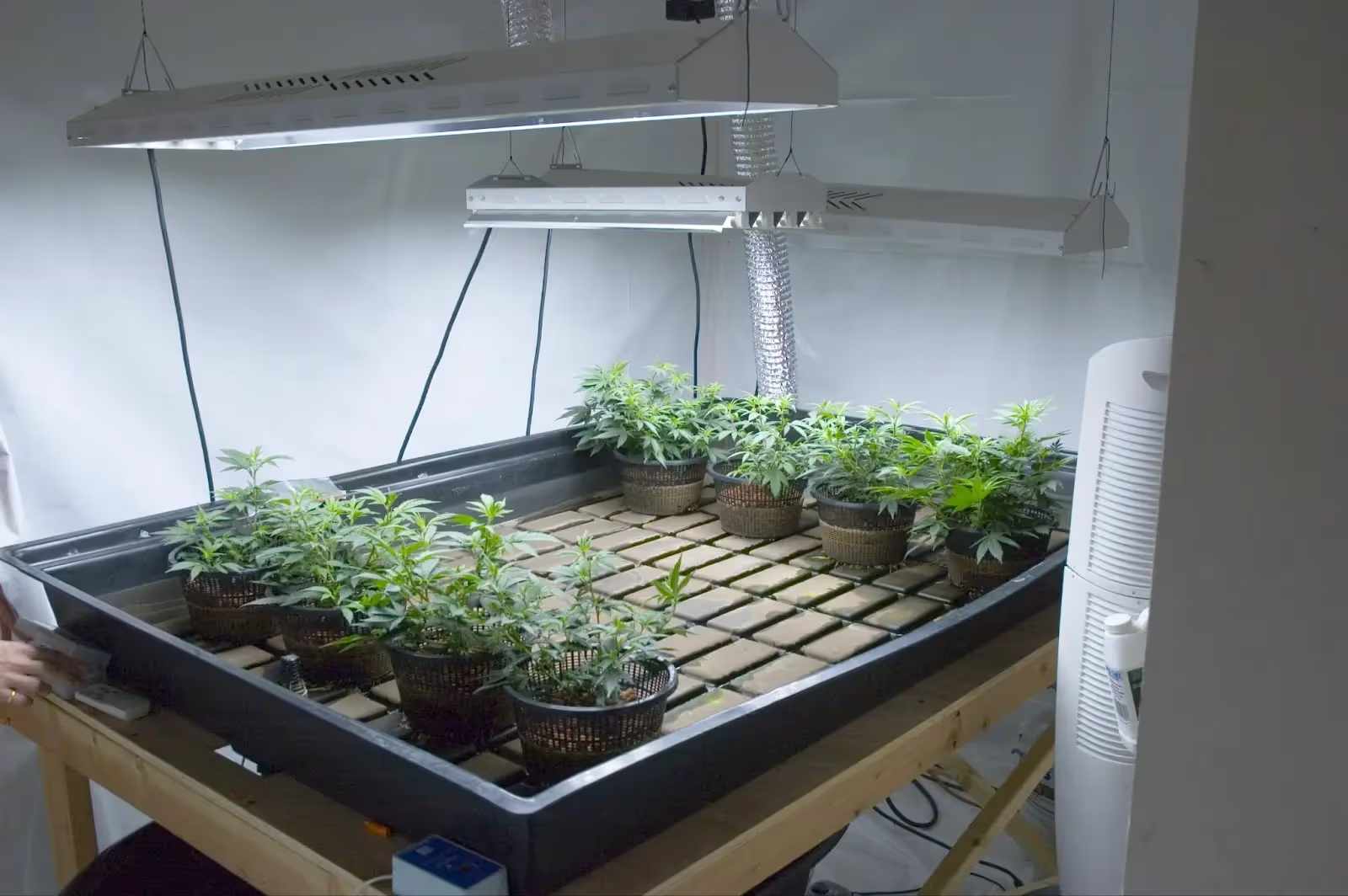
Takeaways
To top or not top your plants boils down to understanding your plants' specific needs, your growing environment, and your cultivation goals.
Both topping and not topping offer distinct advantages that can significantly influence the growth patterns and yield of your cannabis.
Topping plants creates a bushier structure that can lead to increased bud production and a more manageable plant height.
This method also tends to produce more sturdy plants and allows for a more even distribution of light across the plant, potentially boosting overall yield.
On the other hand, not topping allows the plant to grow naturally, which can be less labour-intensive and enable the plant to express its genetic potential in its purest form.
Ultimately, your decision should align with the specific conditions of your grow environment, the characteristics of the strains you are cultivating, and your personal preferences in plant management.
Both methods have their merits, and the best approach may vary from one grower to another and from one plant to another.
Whether you choose to top or not, the key to maximising yield lies in consistent care, appropriate environmental controls, and an ongoing commitment to learning and adapting your techniques to suit your plants' needs.
By carefully considering how each method impacts plant growth and your operational goals, you can optimise your approach to cannabis cultivation, leading to healthier plants and more abundant harvests.
Happy growing!
FAQs
What plants need to be topped?
Plants that benefit from topping typically include those with vigorous vertical growth patterns, such as cannabis, tomatoes, and certain ornamental plants.
Topping plants helps to control height, promote lateral branching, and increase overall yield by redirecting all their energy towards lateral growth.
What does it mean when a plant is topped?
When a plant is topped, the apical bud or main stem tip is pruned or removed, typically to encourage lateral or sideways growth and branching.
This process disrupts apical dominance and redirects the plant's energy towards lower branches, promoting bushier growth and increased bud production.
Does topping increase yield?
Yes, topping can increase yield by stimulating lateral branching and the development of additional budding sites. This ultimately leads to a bushier plant with a higher potential for bud production.
Is it too late to top my plant?
If your plant has already entered the flowering stage, it may be too late to top it. Topping is typically performed during the vegetative stage to allow sufficient time for the plant to recover and redirect its growth towards lateral branches.
Should I top a mother plant?
Whether to top a mother plant depends on your specific goals and cultivation preferences. Topping can help maintain the size and shape of the mother plant, promote lateral branching, and encourage the development of healthy clones.
However, it's essential to consider the potential stress and recovery time associated with topping (healthy plants usually recover from topping done correctly within 2-3 days) and the impact on the plant's overall health and vigour.
Why is topping important?
Topping is important for several reasons in plant cultivation. Firstly, it helps to control the height and shape of the plant, particularly in indoor growing environments where vertical space may be limited.
Secondly, topping stimulates lateral branching, which increases the number of budding sites and ultimately leads to greater yields.
Additionally, topping can ensure enough light penetration and airflow within the canopy, promoting even growth and reducing the risk of pest and disease issues. Topping is crucial in optimising plant structure, health, and productivity.
Does topping increase bud size?
Topping itself does not directly increase bud size. Instead, it promotes lateral branching and the development of additional budding sites, which can lead to a greater number of buds overall.
Various factors, including genetics, environmental conditions, nutrient availability, and overall plant health, influence the size of individual buds.
While topping can contribute to a bushier plant with more buds, bud size is ultimately determined by a combination of genetic and environmental factors.
Where do you top plants for the second time?
When topping a plant for the second time, you typically aim to remove the new growth that has emerged from the previous topping site.
This involves identifying the new main stem or dominant shoot that has developed since the first topping and pruning it to encourage further lateral branching.
Should I top or fim?
Whether to top or fim (short for "f*** I missed") depends on your specific goals and preferences in cannabis cultivation.
Topping involves completely removing the apical meristem, or main stem tip, which encourages lateral branching and results in two main shoots.
Fimming, on the other hand, involves pinching off the apical meristem, allowing it to split into multiple new shoots.
Topping typically results in more defined branching and can be better suited for growers seeking precise control over plant structure and height.
Fimming, while less precise, can lead to more branches and potentially greater overall yield, but with less control over the final plant shape.
Want to grow like a pro? Subscribe to the Grow The Best newsletter!










.avif)
